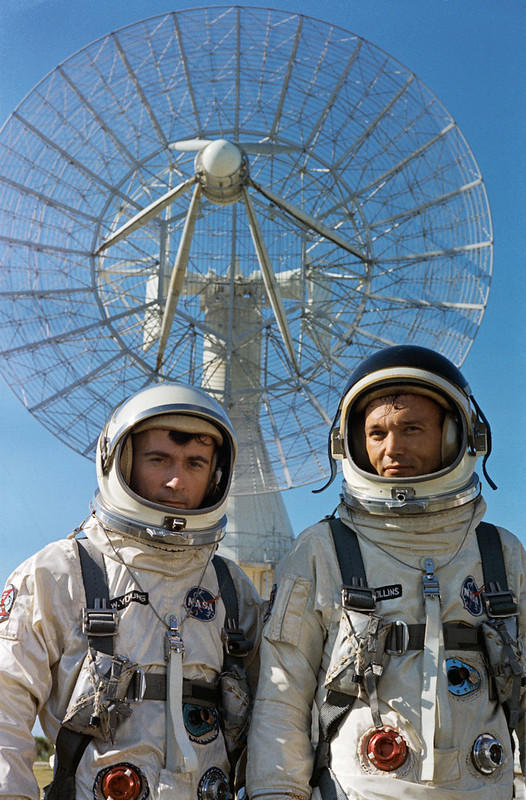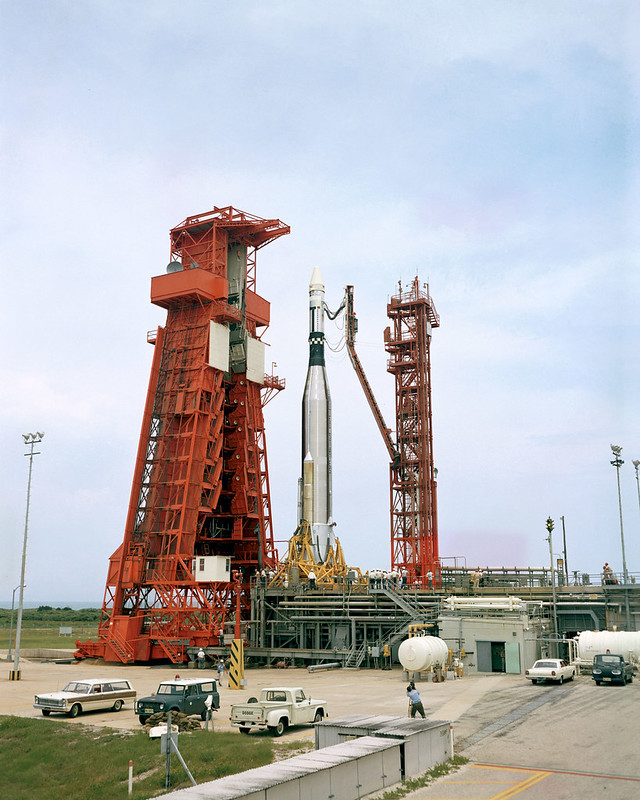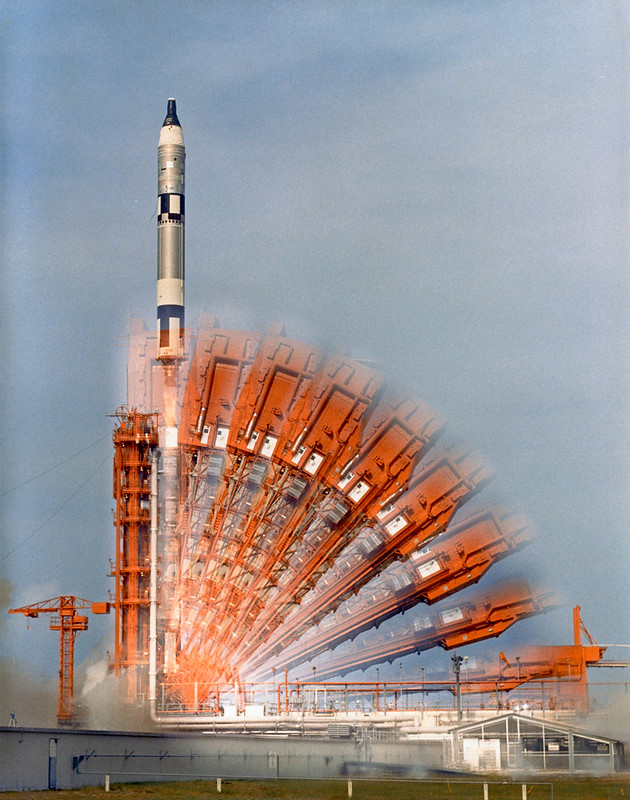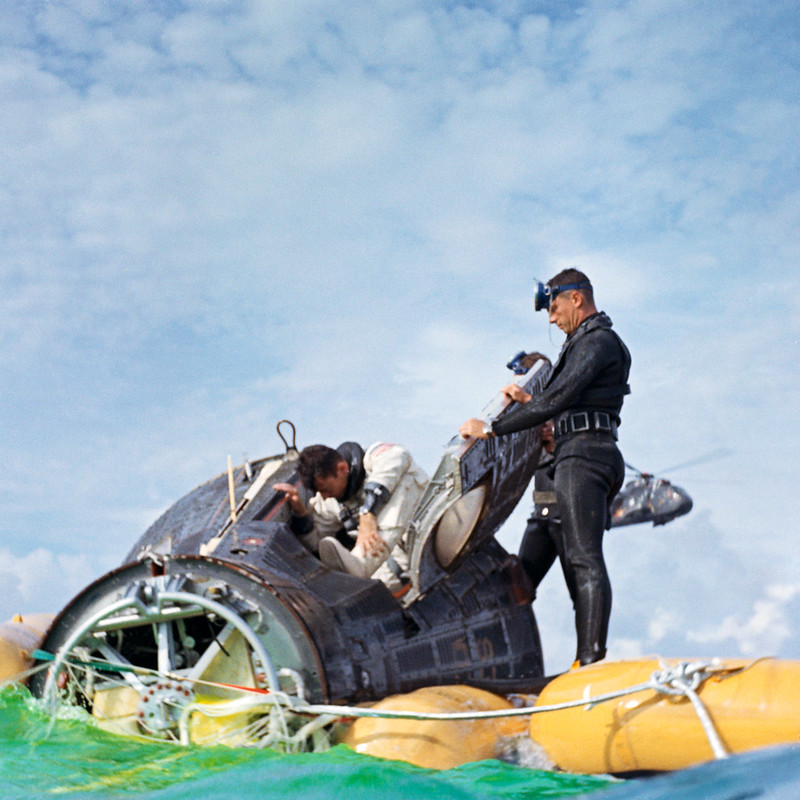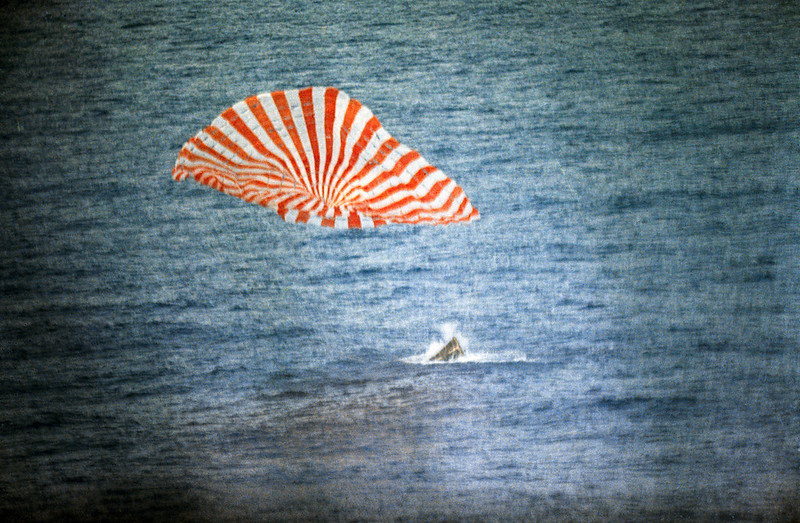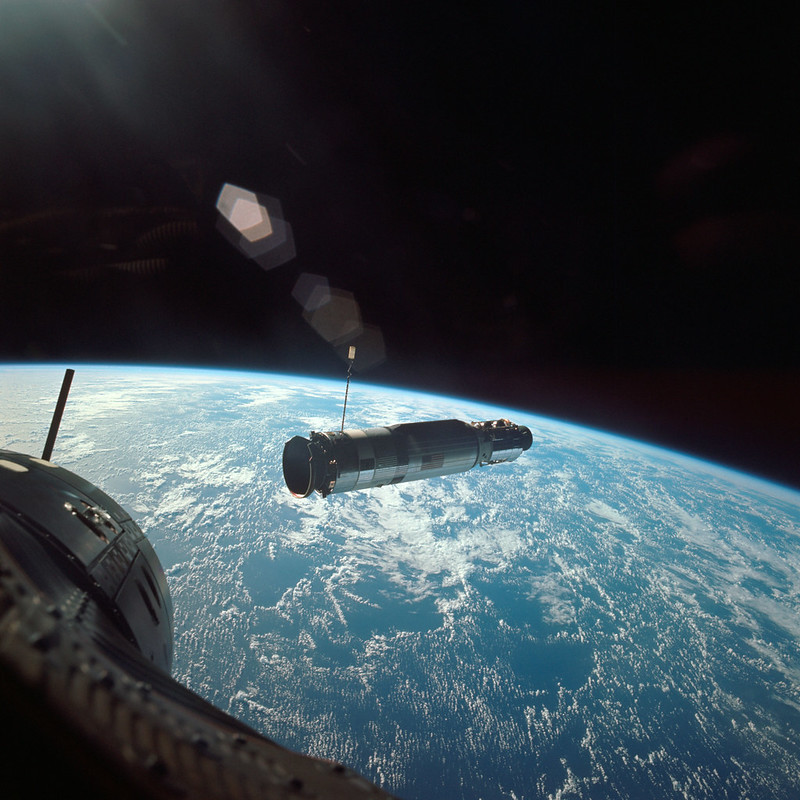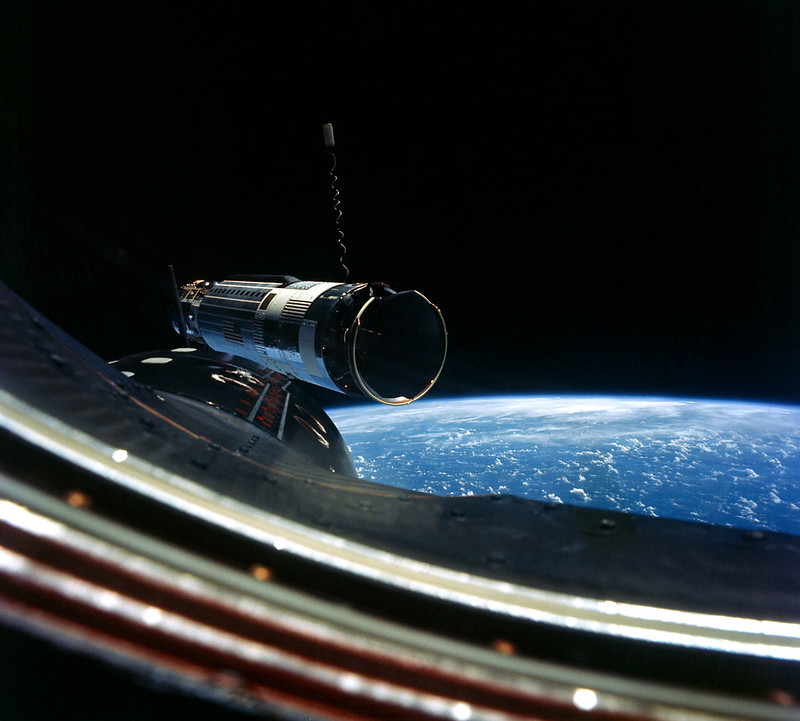Gemini 10 Fact Sheet
By Cliff Lethbridge

Gemini 10 (NASA Code: GT-10)
Launch Date: July 18, 1966
Launch Time: 5:20:26 p.m. EST
Launch Site: Launch Complex 19
Launch Vehicle: Gemini-Titan II GLV-10 (GT-10)
Capsule: Gemini Spacecraft Number 10
Capsule Nickname: None
Crew:
John W. Young, Command Pilot
Michael Collins, Pilot
Back-up Crew: Bean, Williams
Mission Duration: 2 Days, 22 Hours, 46 Minutes, 39 Seconds
Number of Orbits: 43
Recovery Date: July 21, 1966
Recovery: U.S.S. Guadalcanal (Atlantic Ocean)
Mission Summary:
Gemini 10 marked the second successful dual launch and docking with the Gemini Agena Target Vehicle (GATV). The GATV was launched as the second stage of an Atlas-Agena rocket at 3:40 p.m. EST on July 18, 1966 from Cape Canaveral Launch Complex 14. The GATV launch occurred about 100 minutes prior to the launch of the Gemini 10 spacecraft.
The Gemini 10 spacecraft successfully completed a rendezvous with the GATV at a mission elapsed time of 5 hours, 23 minutes. Docking was successfully achieved about 30 minutes later. However, the rendezvous and docking used up more Orbital Attitude Maneuvering System (OAMS) fuel than planned, resulting in a revised flight plan.
The revised flight plan resulted in the cancellation of a number of experimental orbital and docking training maneuvers, and resulted in the Gemini 10 spacecraft remaining docked to the GATV for about 39 hours, a longer period of time than originally planned.
During the time the Gemini 10 spacecraft remained docked to the GATV, two interesting milestones occurred. At a mission elapsed time of 23 hours, 24 minutes the hatch was opened. This allowed astronaut Collins to stand up in his seat, with his upper body extending outside the spacecraft.
This was called a “stand-up” spacewalk, and although the astronaut never ventured outside the Gemini 10 spacecraft, he was able to carry out a number of experiments, visual observations and photography. Collins was able to photograph stars in ultraviolet light, which is only possible outside the atmosphere of Earth. He took 22 shots of the southern Milky Way with a 70-mm camera.
This was the first “stand-up” spacewalk of the U.S. space program. Although it could have lasted longer, the “stand-up” spacewalk was cut short when an irritant in the oxygen supply temporarily blinded both astronauts. The hatch was subsequently closed at a mission elapsed time of 24 hours, 13 minutes.
Another significant milestone occurred during the span of time the Gemini 10 spacecraft was docked to the GATV. Through a series of firings of the GATV multiple-start engine thrusters, the mated spacecraft were boosted to a maximum altitude of 476 miles. At the time, this established a record for manned altitude.
The GATV multiple-start engine thrusters were then fired in a series of six maneuvers to place the mated spacecraft on a path to intercept the GATV employed during the Gemini 8 mission. The Gemini 10 spacecraft undocked from the GATV at a mission elapsed time of 44 hours, 40 minutes.
About three hours after undocking, the Gemini 10 spacecraft successfully completed a rendezvous with the Gemini 8 GATV. The rendezvous was accomplished through visual location methods only, since the Gemini 8 GATV could no longer produce power to run its radar locating devices. The two spacecraft never docked, however.
At a mission elapsed time of 48 hours, 41 minutes, the hatch was opened. Unlike the first spacewalk of the mission, astronaut Collins remained tethered to the Gemini 10 spacecraft by a life support umbilical line, and exited the hatch six minutes after it was opened.
Using his Personal Propulsion Unit (PPU), this one powered by pressurized nitrogen tapped directly from the Gemini 10 spacecraft docking adapter, Collins propelled himself toward the Gemini 8 GATV, situated about ten feet distant. Collins removed two experiment packages, including a micrometeorite impact detector, from the Gemini 8 GATV.
While retrieving the experiment packages, Collins accidentally sent the Gemini 8 GATV into a slight gyrating motion, which caused problems for astronaut Young as he attempted to keep the two spacecraft close to one another. The use of Gemini 10 spacecraft thrusters for this purpose caused the fuel to reach low and unsafe levels, and the spacewalk was cut short.
A plan for Collins to install a replacement experiment package aboard the Gemini 8 GATV was abandoned. During the spacewalk, Collins lost hold of his camera, which drifted off into space. He also became entangled in his life support umbilical line. Collins spent just 25 minutes outside of the Gemini 10 spacecraft during this spacewalk.
The hatch was closed at a mission elapsed time of 49 hours, 20 minutes. The hatch was opened again at a mission elapsed time of 50 hours, 33 minutes to allow the astronauts to jettison extraneous equipment. The hatch was closed just one minute after it was opened. The Gemini 10 capsule splashed down about three miles from its primary recovery target area.
SELECTED NASA PHOTOS FROM GEMINI 10
